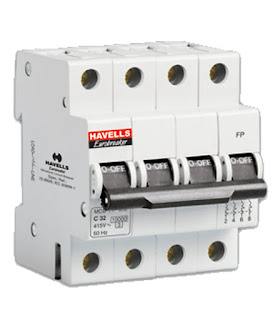How a circuit breaker works
Operation
All
circuit breaker systems have common features in their operation. Although
details vary substantially depending on the voltage class, current rating and
type of the circuit breaker.
The
circuit breaker must detect a fault condition; in low voltage circuit breakers
this is usually done within the breaker enclosure. Circuit breakers for large
currents or high voltages are usually arranged with protective relay pilot
devices to sense a fault condition and to operate the trip opening mechanism.
The trip solenoid that releases the latch is usually energized by a separate
battery, although some high-voltage circuit breakers are self-contained with
current transformers, protective relays and an internal control power source.
Once
a fault is detected, the circuit breaker contacts must open to interrupt the
circuit; some mechanically-stored energy (using something such as springs or
compressed air) contained within the breaker is used to separate the contacts,
although some of the energy required may be obtained from the fault current
itself. Small circuit breakers may be manually operated, larger units have
solenoids to trip the mechanism, and electric motors to restore energy to the
springs.


No comments :
Post a Comment